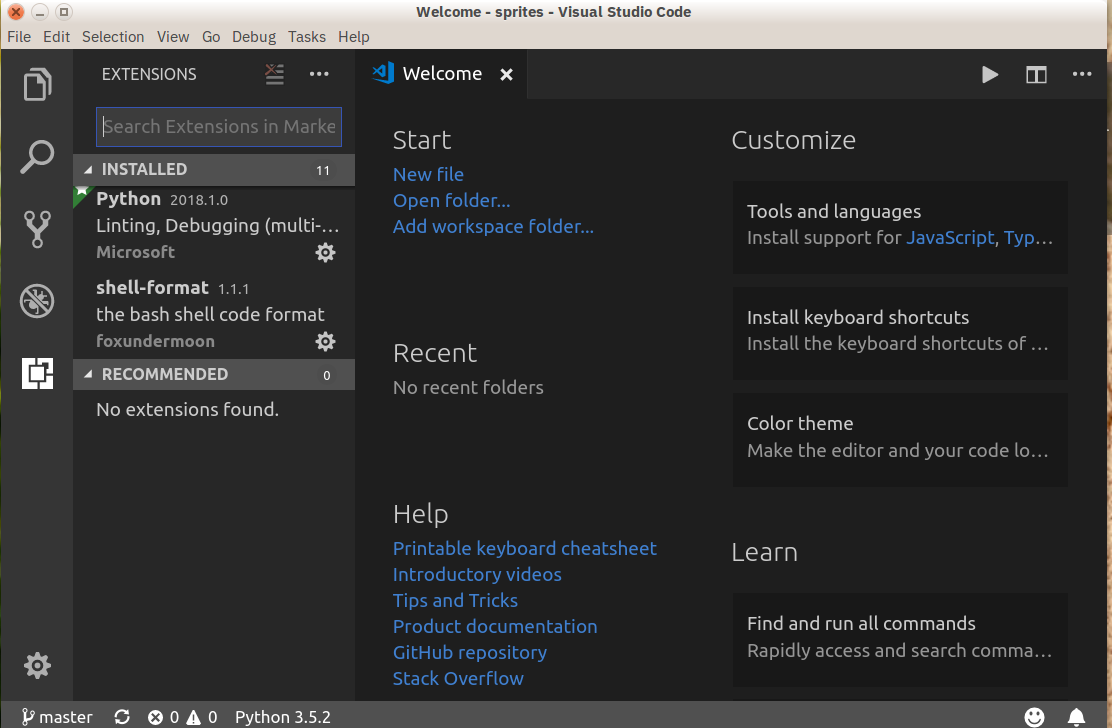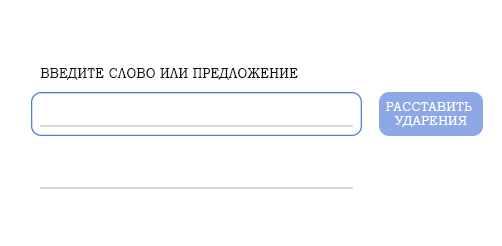Development of a system for automatic placement of diacritics
Content
- Introduction
- 1 Relevance of the work
- 2 The purpose of the work
- 3 Choosing a programming language and development environment
- 3.1 Python Programming Language
- 3.2 Visual Studio Development Environment
- 4 Python Web Development Tools
- 4.1 Web Application Development Frameworks
- 4.2 Creating a website using Flask
- 5 Possibilities of using the developed system in education and professional spheres
- Conclusion
- List of sources
Introduction
In the modern world, where information technology and language exchanges occupy an important place, there is a problem of insufficient clarity in the spelling and pronunciation of words due to the lack of diacritics. Diacritics such as accents, tildes, and others play a key role in distinguishing words, even in the same alphabet. However, in many cases, texts and messages remain devoid of these important signs due to various reasons, such as inconveniences in typing, incomplete understanding of their meaning, or technical limitations in transmitting information.
This problem leads to misunderstandings, especially in multilingual communities, where the same word without diacritics may have different meanings or pronunciation depending on the context. For example, in some languages, stress can change the meaning of a word or indicate a difference in grammar.
In light of these factors, the development of a system for automatic placement of diacritics becomes an urgent task aimed at improving clarity and accuracy in language communications, as well as reducing the likelihood of misunderstanding the text due to the absence of important linguistic elements.
Diacritics, including accents, tildes, acts and others, play a significant role in the language, influencing the correct pronunciation and understanding of words. These signs carry important linguistic information that can change the meaning and accent of a word, even if the same alphabet is used.
The pronunciation of words may differ significantly depending on the placement of diacritics. For example, in words with different accents, their tonics may change, which is essential for languages where stress can affect the form of a word or its grammatical role. In the absence of these signs, the text may be mispronounced and interpreted, which creates problems in communication, especially when learning languages or in intercultural interaction.
Diacritics can also play a role in distinguishing words with similar spellings but different meanings. In many languages, even small changes in spelling due to the use of diacritics can lead to significant differences in meaning, which emphasizes the need for their correct placement in order to accurately understand the text and prevent linguistic errors.
Thus, the system of automatic placement of diacritics is an important tool for ensuring clarity, accuracy and correct perception of text in various linguistic contexts.
1 Relevance of the work
The modern world, saturated with multilingual communications and information flows, is faced with the problem of limitations associated with the absence of diacritics in texts. This problem leads to misunderstandings, pronunciation errors and misinterpretation of words, which affects the effectiveness of communication in various contexts, ranging from education and science to the field of international business relations.
With the development of technology and the increase in the volume of texts transmitted through digital channels, there is a need for tools that can automatically place diacritics, thereby improving the quality and clarity of textual information. In the field of language learning and intercultural exchange, where nuances of pronunciation and the correct use of diacritics play an important role, such a system can become an integral means of facilitating the learning process and increasing cultural understanding.
In addition, in a professional and business environment, accuracy and clarity of thought expression are important for successful interaction between different linguistic and cultural groups. The development of an automatic diacritical mark placement system is becoming an urgent task aimed at eliminating barriers to communication and improving the quality of textual information in the digital age.
Thus, this work seeks to solve the urgent problem of the absence of diacritical marks in texts by providing an effective system capable of automatically placing these signs and, thereby, increasing clarity and accuracy in language interactions.
2 The purpose of the work
The purpose of this master's thesis is to create a system capable of automatically placing diacritics in texts using the Python programming language. The development will focus on creating a website that provides users with a user-friendly interface for downloading texts and getting results with automatically placed diacritics.
To achieve this goal, it is necessary to develop effective text processing algorithms capable of determining the optimal distribution of diacritics, taking into account the context. An important aspect will also be to take into account the different language features and rules of diacritics for different languages, ensuring the flexibility of the system.
The creation of a website includes the development of a user interface for convenient loading of text data, as well as the integration of the developed system with a Python web server. The security and stability of the system will also be given due consideration to ensure the reliable operation of the web application.
This approach will maximize the scope of the system, making it accessible to a wide range of users through a web interface, which is important for everyday use in educational and professional fields.
3 Selection and justification of the methodology for developing a system in the Python programming language using the Visual Studio Code development environment
The choice of the Python programming language is justified by its multifaceted advantages, especially in the context of developing a system for automatic placement of diacritics. Python is known for its simplicity and clarity of syntax, which makes it accessible to a wide range of developers. The rich ecosystem of libraries and frameworks supported by Python will provide the necessary tools to implement effective text processing algorithms.
The Visual Studio Code (VS Code) development environment was chosen due to its popularity, advanced functionality and the ability to integrate with various Python development tools. VS Code will provide a user-friendly interface for writing code, debugging support, as well as tools for project management, which is important for developing complex systems such as an automatic diacritic placement system.
The choice of Python and WE Code is also justified by the desire for maximum flexibility and ease in integrating the system with the website. Python, as an open source language, and VS Code, as a free and extensible development environment, will provide comfortable conditions for the development, testing and further maintenance of the system.
3.1 Python Programming Language
Python is a high–level general-purpose programming language. Its design philosophy emphasizes the readability of the code using significant indentation.
Python has dynamic typing and garbage collection (memory freeing). It supports several programming paradigms, including structured (especially procedural), object-oriented, and functional programming. It is often called a "battery-powered" language because of the extensive standard library
Python was developed and released in 1991 by programmer Guido van Rossum. It is consistently considered one of the most popular programming languages.
The large Python standard library provides tools suitable for many tasks. For Internet-connected applications, many standard formats and protocols are supported, such as MIME and HTTP. The library includes modules for creating graphical user interfaces, connecting to relational databases, generating pseudo-random numbers, arithmetic with arbitrary precision decimals, manipulating regular expressions and unit testing.
Some parts of the standard library are covered by specifications, for example, the implementation of the wsgiref Web Server Gateway Interface (WSGI) complies with PEP 333, but most of them are defined by their code, internal documentation and test suites. However, since most of the standard library is cross-platform Python code, only a few modules need to be modified or rewritten for different implementations.
3.2 Visual Studio Code Editor
Consider the Visual Studio Code editor. Visual Studio Code is a full–featured code editor available on Windows, Linux and Mac OS X. VS Code is an extensible open-source editor that can be customized for any task.
Adding Python support to VS Code is simple, just search for "Python" in the Marketplace, click "Install" and restart the editor if necessary. VS Code will automatically detect the Python interpreter and installed libraries. The program interface is shown in Figure 3.1

Figure 3.1 – Visual Studio Code Interface
4 Python Web Development Tools
Web development in the Python programming language has become popular among developers due to its simplicity, efficiency and extensive library of tools. Python offers a variety of web application development tools that allow you to quickly create and deploy a website or service. Due to their flexibility and extensibility, these tools allow you to solve various tasks, from creating simple websites to complex web applications that meet the requirements of modern users.
Python is quite easy to learn. The language relies on common expressions and spaces, which allows you to write significantly less code compared to some other languages such as Java or C++. Moreover, it has a lower entry barrier because it is comparatively more similar to our everyday language, so you can easily understand the code.
Python offers a wide range of library tools and packages, which allows you to access a large amount of pre-written code, reducing application development time.
Python offers many variations to choose from, including Bottle.py , Flask, CherryPy, Pyramid, Django and web2py. These platforms have been used to support some of the most popular websites in the world, such as iTunes and Spotify, Mozilla browser, Reddit, the Washington Post and Yelp.
4.1 Web Application Development Frameworks
A web framework is a set of packages and modules consisting of pre-written standardized code that supports the development of web applications, making development faster and easier, and your programs more reliable and scalable. In other words, frameworks already have built-in components that “customize” your project.
Python web frameworks are used only in the backend for server technologies, helping with URL routing, HTTP requests and responses, database access, and web security. Although using a web framework is not necessary, it is highly recommended because it helps you develop complex applications in significantly less time.
Django. Django is one of the most popular and powerful Python frameworks for web development. It provides a framework and tools for creating fully functional web applications. Django has built-in authentication, an administrative interface, form processing and database support.
Flask is considered a micro framework, which is a minimalistic web framework. It lacks many of the features that full-featured frameworks like Django offer, such as the web template engine, account authorization, and authentication.
Flask is minimalistic and lightweight, which means that you add extensions and libraries that you need as you write code, without the framework automatically providing them.
The philosophy of Flask is that it provides only those components that are necessary to create an application so that you have flexibility and control.
Pyramid. Pyramid is a flexible Python framework for developing web applications of any size. It offers various features such as routing, templating, authentication, and extensibility. Pyramid also provides many answers to architectural patterns, which makes it an attractive choice for developers.
Tornado: Tornado is an asynchronous Python web framework that was developed by Facebook. It provides powerful tools for building high-performance web applications. Tornado also supports interaction with network protocols such as WebSockets and HTTP.
This is just a small list of web application development tools in the Python programming language. The choice of a framework depends on the requirements of the project and the preferences of the developer.
4.2 Creating a website using Flash
As a necessary framework for website development, let's focus on the Flask framework, as it is best suited to the goals of the project. It is minimalistic and flexible, which greatly simplifies the task.
Let's take a closer look at creating a website in Python. Before starting to develop a web application, you need to study HTML and CSS, which are the basis for creating websites. Knowledge of the JavaScript programming language is also required.
To work directly with the Flask framework, you need to install it. Flash is installed using the pip install flash command. Figure 4.1 shows the import of Flask for our project.

Figure 4.1 – Importing Flask
Next, Figure 4.2 shows the creation of an instance of the Flask class.

Figure 4.2 – Creating an instance of the Flask class
Figure 4.3 shows the definition of routes for our site.

Figure 4.3 – Determining the route for the site
The following code is used to launch the web application, shown in Figure 4.4.

Figure 4.3 – The code for launching the web application
In Flask, HTTP requests (both GET and POST) can be processed using route() decorators or class representation methods.
To process GET requests, you can use the route() decorator with the path and method specified (by default, GET). An example is shown in Figure 4.5.

Figure 4.3 – Processing GET requests
To process POST requests, the route() decorator is used, specifying the POST method. The method shown in Figure 4.6 is used.

Figure 4.3 – POST request processing
5 Possibilities of using the developed system in education and professional spheres
The developed system of automatic placement of diacritics in the Python programming language, integrated in the form of a website, provides significant opportunities for use in educational institutions and the professional sphere.
Figure 5.1 shows the layout of the input line on the site for placing diacritics

Figure 5.1 – Layout of the input line on the website
(animation: 7 frames, 8 repetition cycles, 10.1 KB)
In an educational context, the system can be used as a learning tool for students and teachers, helping to improve the understanding and correct pronunciation of texts in various languages. Specialized lessons and assignments can be developed using the system, focusing on the correct placement of diacritics in educational materials.
In the professional field, the system can be useful for translators, editors and anyone who works with multilingual texts. Effective and accurate placement of diacritics will improve the quality of translations and help avoid linguistic errors, which is especially important in the business and international environment.
In addition, the system can be integrated into text editors, office applications and other software tools used in professional activities. This will ensure convenience and accessibility for a wide range of users, regardless of their level of technical training.
Thus, the developed system is a useful tool in both educational and professional fields, contributing to the improvement of language skills and the quality of text processing in a variety of use contexts.
Conclusion
As part of this master's thesis, an exhaustive development of an automatic diacritical mark placement system in the Python programming language using the Visual Studio Code development environment was presented. The problem of the absence of diacritics in texts has a significant impact on the clarity and correct understanding of the language, and the developed system represents a significant step in solving this problem.
In the course of the study, an analysis of existing methods of placing diacritics was carried out, which made it possible to determine the best practices and approaches for integration into the system being developed. The choice of the Python programming language and the Visual Studio Code development environment is justified by their flexibility, ease of use, as well as a wide community of developers.
The developed system, integrated in the form of a website, has significant potential for application in educational and professional fields. Its use can significantly improve the language skills of students and specialists, as well as improve the quality of translations and processing of multilingual texts in a professional context.
Based on the research and development carried out, it can be concluded that the system of automatic placement of diacritics fully corresponds to the set goal and objectives of the master's thesis. Its implementation in practical use cases promises a positive impact on linguistic clarity and accuracy in various areas where the correct interpretation of textual information is important.
List of sources
- About Puthon [electronic resource] / - Access mode: https://www.python.org/about/
- PEP 333 – Python Web Server Gateway Interface v1.0 [electronic resource] / - Access mode: https://peps.python.org/pep-0333/
- Visual Studio Code – Code Editing [electronic resource] / - Access mode: https://code.visualstudio.com/
- Dawson, M. Programming in Python / M. Dawson // Peter, 2020. - p. 416.
- Greenberg, M. Development of web applications using Flask in Python / M. Greenberg // LitRes, 2022. - 312.
- What is Flask Python [electronic resource]/ - Access mode: https://pythonbasics.org/what-is-flask-python/
- Ramillo, L. Python. To the heights of mastery / L. Ramaglio // DMK Press, 2016. - p. 313.
- Lubanovich, B. Simple Python. Modern programming style, 2nd edition / B. Lyubanovich // Peter, 2016. - p. 189.
- Forcier, D. Django. Development of Web applications in Python / D. Forcier, P. Bissex, W. Chan // Symbol-Plus, 2009. - p. 166.
- Yantsev, V. Web programming in Python. Textbook for universities / V. Yantsev // LAN, 2023.
